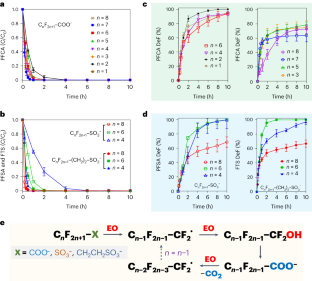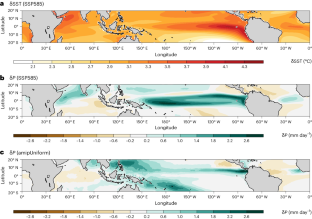2024-05-08 カリフォルニア大学リバーサイド校(UCR)
<関連情報>
- https://news.ucr.edu/articles/2024/05/08/new-forever-chemical-cleanup-strategy-discovered
- https://www.nature.com/articles/s44221-024-00232-7
統合型光電気化学プロセスによる水性フィルム形成フォーム中のPFASのほぼ完全な破壊 Near-complete destruction of PFAS in aqueous film-forming foam by integrated photo-electrochemical processes
Yunqiao Guan,Zekun Liu,Nanyang Yang,Shasha Yang,Luz Estefanny Quispe-Cardenas,Jinyong Liu & Yang Yang
Nature Water Published:01 May 2024
DOI:https://doi.org/10.1038/s44221-024-00232-7

Abstract
Per- and polyfluoroalkyl substances (PFAS) are highly recalcitrant pollutants in the water environment worldwide. Aqueous film-forming foam (AFFF) used for firefighting is a major source of PFAS pollution. However, complete defluorination (that is, cleaving all C–F bonds into F− ions) of PFAS by non-thermal technology is rare. The destruction of the PFAS mixture in the complex organic matrix of AFFF is even more challenging. Here we designed and demonstrated an ultraviolet/sulfite–electrochemical oxidation (UV/S–EO) process. The tandem UV/S–EO leverages the complementary advantages of UV/S and EO modules in the PFAS transformation mechanism and the engineering process design (for example, foaming control, chemical dosage and energy consumption). At ambient temperature and pressure, the UV/S–EO realized near-complete defluorination and mineralization of most PFAS and organics in AFFF (50–5,000 times diluted, containing up to 200 mg l−1 organic fluorine and 3,764 mg l−1 organic carbon). This work highlights the integration of molecular-level insight and engineering design towards solving the major challenges of AFFF water pollution.



